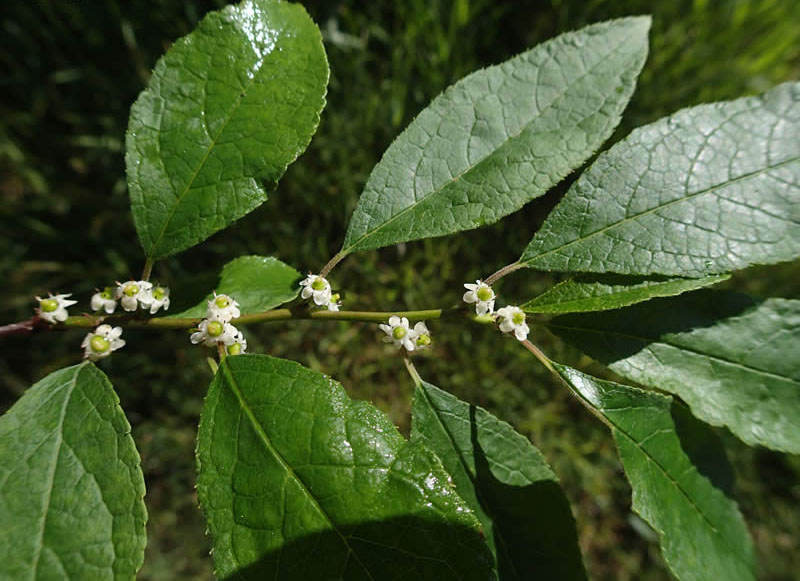Unlike the iconic ‘holly and berries’ we think of, winterberry holly is not of an evergreen variety and loses its leaves in the fall. After the leaves dry out and drop off in the fall, you are left with a breathtaking view of thousands of brightly colored berries clinging to every stem that live through midwinter! Winterberry, botanically known asIlex verticillata, is the fruit of a species of holly native to eastern North America in the United States and southeast Canada.
These shrubs are not grown for their flowers, but do produce tiny flowers that are 1/5 inch in diameter with a few white petals each. The winterberries are each slightly larger than the flowers at 1/4 inch in diameter. These shrubs are grown for their colorful and abundant fruit.

The prolific berries remain on these plants for several weeks to months through winter. Birds and other animals tend to not be interested in these tasty berries until they have softened considerably. Red is the most common color for these berries but orange and yellow varieties also exist.
The beautiful berries are attractive alone, covered in frost or covered in snow with winter weather, enhancing the show. Against a backdrop of snow, they pop. Encased in ice, they are jewel-like.
These shrubs typically grow to between 3 to10 feet tall, but can reach as tall as 20 feet high in some circumstances. The smooth bark of winterberry is gray to blackish, with knobby lenticels.
The dense branches of this shrub grow in a zigzag pattern with an upright spreading crown. The
twigs are slender, with gray to gray-brown color.
The leaves are not shaped with sharp teeth like other hollies. The dark green elliptical shaped leaves are about 2 to 3 inches long. Edges are finely toothed, shallow, and often with a minute projection at the tip. The upper surface is dark green, hairless to sparsely hairy, and the lower surface light green and hairy.
These little, typically red, fruits are prized, making winterberry an ornamental plant in gardens for a splash of color during winter. The densely packed red berries really pop with an absence of foliage. People and animals alike will appreciate these beautiful plants.

Winterberry is one of the rare deciduous shrubs that provide good year-round interest in the garden. It is a slow-growing shrub with a rounded upright growth habitat. They are commonly used as a property border or to screen views.
These berries are relatively easy to grow, with very few diseases or pests. Soil that is wet and acidic is optimal, but winterberry will grow well in an average garden. Male and female flowers typically grow on separate plants but occasionally on the same plant. It is important for at least one male plant to be planted in proximity to one or up to five females for females to bear fruit. It can be propagated by seed, rooted stem divisions, or stem cuttings. Propagatig is most popular because from seedlings the sex of the plant is typically indeterminable.
These delicious berries attract a variety of birds and other wildlife and are a large source of food for American robins. Others attracted by these berries include bluebirds, carbirds, mockingbirds, cedar waxings, deer, racoons, and mice. While many enjoy these berries, they are actually mildly poisonous to others. The ASPCA observes the leaves and berries as toxic to cats, dogs, and horses.
Native Americans used to refer to Ilex verticillata plants as “fever bush,” using the bark to heal cuts and bruises.










Leave a comment